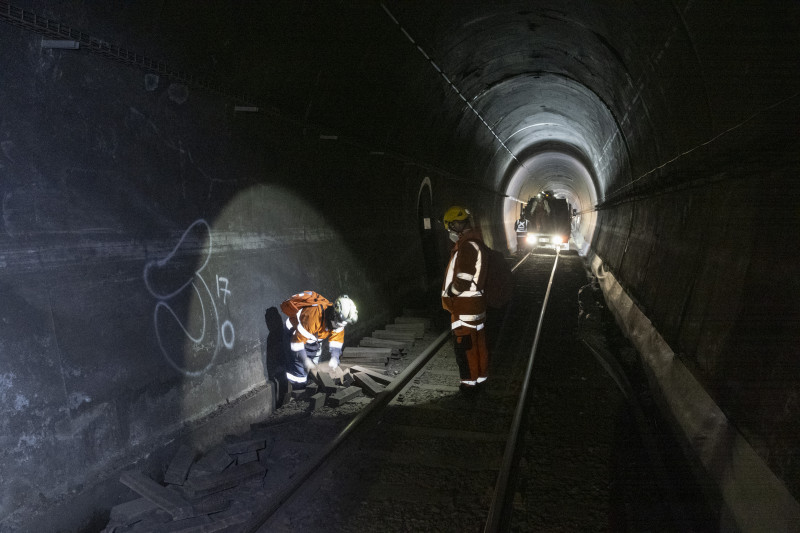Work on renewing New Zealand’s second longest tunnel gets underway

It’s been a long time since tracks were laid inside this 8.8km tunnel – the second longest in the country, which has been in operation since first opening in 1955.
With passenger and freight trains passing through every day, the Remutaka Tunnel is a critical piece of infrastructure for the region.
Last year we got inside to replace the drainage in the tunnel. We are excited now to be starting the work of completely replacing the old wooden sleepers with modern composite sleepers and heavier gauge 50kg railway line. This will allow trains to travel through the tunnel safely and comfortably at 100kph instead of the current 60kph limit.
Project manager David Sauvageon says KiwiRail is in the preparatory stages of a significant, and complex piece of engineering work.
“The tunnel is a challenging environment. Our teams have to work in a dark and confined space, and we have short windows to get as much of the work done as we can when trains aren’t running.
“Some of the early preparation work is underway, with the crew on site and in full swing 24/7 from Friday 29 March through to the end of Monday 1 April. There will be further work over ANZAC Weekend, and smaller work windows throughout the year. Christmas will see our next major line shut down where we can do the bulk of the work and complete the job.
“We’re mindful of keeping noise and disruption at arms-length from the neighbours where we can and have set up an additional laydown area where we are further away from people and houses. All high-noise activity, like dismantling the old rail panels, will happen during the day as much as possible, and we will have traffic management in place to keep the environment safe for anyone on the road.”
Upgrading the Remutaka Tunnel is part of Future Rail – a partnership between KiwiRail and Greater Wellington Regional Council to make train commuting around the Wellington Region and Wairarapa faster and with more frequent services. Peak and offpeak services on the Wairarapa line are set to double from 10 to 20 per day from 2029.